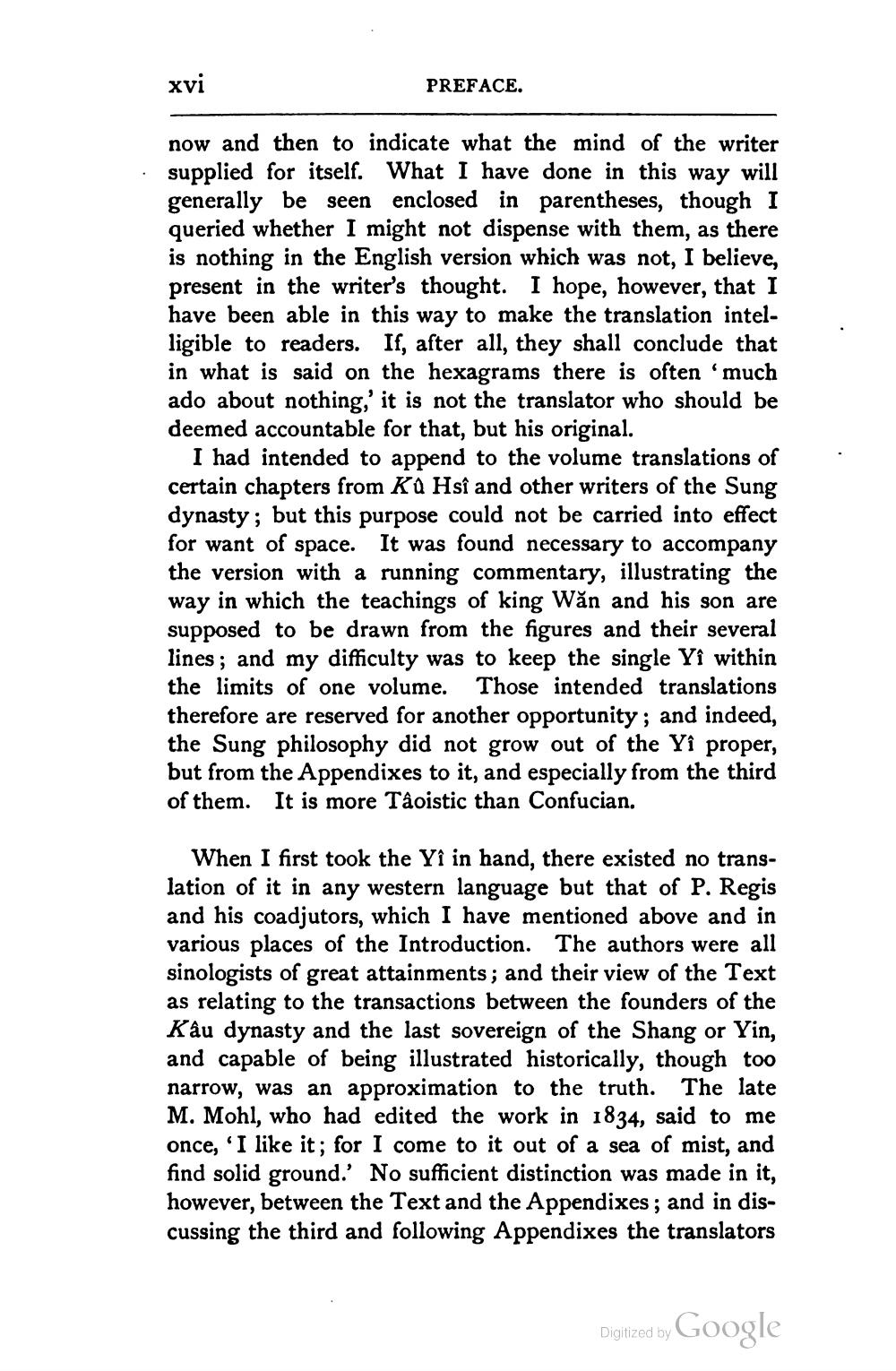________________
xvi
PREFACE.
now and then to indicate what the mind of the writer supplied for itself. What I have done in this way will generally be seen enclosed in parentheses, though I queried whether I might not dispense with them, as there is nothing in the English version which was not, I believe, present in the writer's thought. I hope, however, that I have been able in this way to make the translation intelligible to readers. If, after all, they shall conclude that in what is said on the hexagrams there is often 'much ado about nothing,' it is not the translator who should be deemed accountable for that, but his original.
I had intended to append to the volume translations of certain chapters from Ku Hsî and other writers of the Sung dynasty; but this purpose could not be carried into effect for want of space. It was found necessary to accompany the version with a running commentary, illustrating the way in which the teachings of king Wăn and his son are supposed to be drawn from the figures and their several lines; and my difficulty was to keep the single Yi within the limits of one volume. Those intended translations therefore are reserved for another opportunity; and indeed, the Sung philosophy did not grow out of the Yi proper, but from the Appendixes to it, and especially from the third of them. It is more Taoistic than Confucian.
When I first took the Yî in hand, there existed no translation of it in any western language but that of P. Regis and his coadjutors, which I have mentioned above and in various places of the Introduction. The authors were all sinologists of great attainments; and their view of the Text as relating to the transactions between the founders of the Kâu dynasty and the last sovereign of the Shang or Yin, and capable of being illustrated historically, though too narrow, was an approximation to the truth. The late M. Mohl, who had edited the work in 1834, said to me once, 'I like it; for I come to it out of a sea of mist, and find solid ground. No sufficient distinction was made in it, however, between the Text and the Appendixes; and in discussing the third and following Appendixes the translators
Digitized by Google




